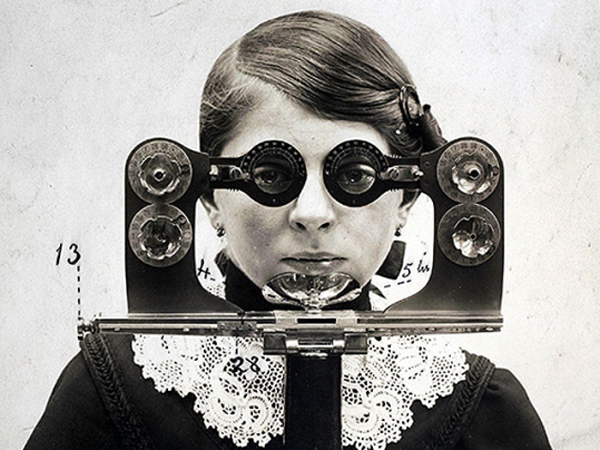CBS news has a post up with a collection of photographs from the 19th and 20th centuries of ophthalmologic care from the extensive and excellent archives of The Burns Archive, one of the largest collections of early medical photography in the world curated by Dr. Stanley B. Burns. Note: some images are potentially disturbing.
On one hand, these images are fascinating from the perspective of how far we have come in our understanding of vision and ophthalmologic care. Seeing ophthalmologic disease advance as far as is depicted in these images in developed countries is almost unheard of as there are very few disorders of the anterior portion of the eye that we are unable to intervene on some level with. Everything from corneal transplants and surgical reshaping in refractive surgeries to lens replacements for cataracts are common procedures. Other interventions in the anterior eye can include surgeries for some forms of glaucoma, surgical approaches for strabismus and more. On the other hand, much needs to be done with our basic understanding of many issues at the front of the eye to improve clinical interventions there. Our biggest limitation in vision science and ophthalmology is our understanding of the back of the eye, the retina which is woefully incomplete. Though the study of the retina is nearly 150 years old, we are still learning about how the cells in the retina are connected and what goes wrong with those neurons and their connections in disease. In humans and other mammals, we are still unable to recover vision loss when the cause or affected tissue involves the retina, though there are tremendously exciting prospects for recovery of vision loss in the retina just around the corner in several research groups around the world including here at the Moran Eye Center. These are large, multi-laboratory efforts to cure vision loss by some of the hardest working people I know who are passionate about the science and keenly aware of the implications for many around the world who are suffering from vision loss. We look forward to seeing the impact of our work and the work of our colleagues in understanding of the basic mechanisms of vision and the translation of those ideas and work into clinical interventions that can help the over 37 million people worldwide who suffer from vision loss.
